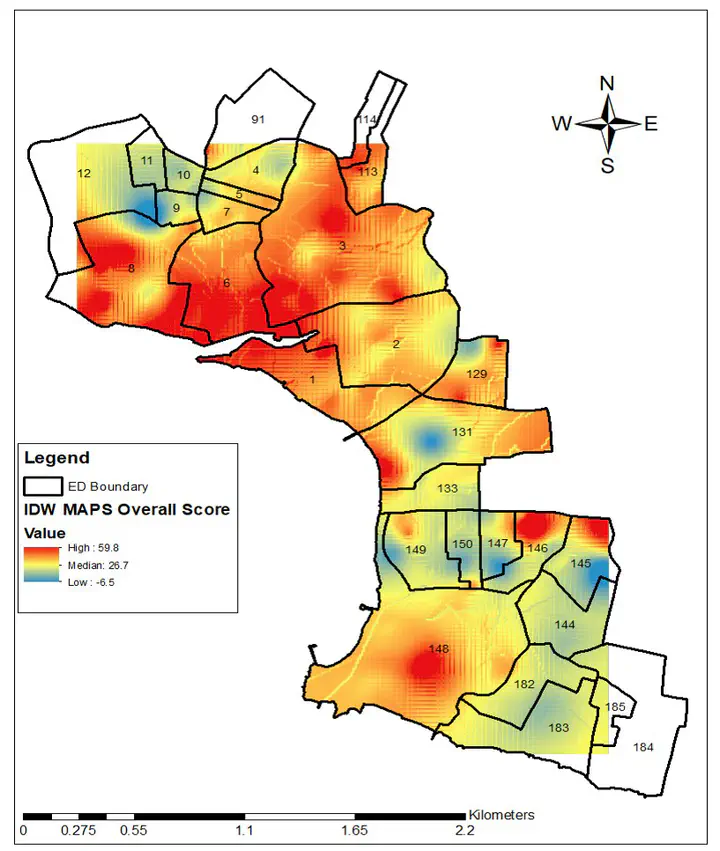StreetScapes
 Microscale Audit of Pedestrian StreetScapes (MAPS)
Microscale Audit of Pedestrian StreetScapes (MAPS)StreetScapes
Neighbourhood Walkability and Physical Activity in Barbados
PhD Candidate: Kern Rocke
Here is a very nice summary of this work written by Kern.
Date created: 10th July 2020
Physical inactivity has progressively increased over the last decade and is estimated to double in the coming decade globally which may contribute to a rise in the burden of chronic non-communicable diseases. In addressing this problem individual and group physical activity (PA) interventions have been implemented across the lifespan however, these interventions have had mixed and variable success. Of major interest now has been the role of the built environment in supporting PA and in improving overall health. One measure of the built environment which has shown a link with PA and health has been that of walkability. Studies have shown positive associations between walkability and increased levels of PA (leisure-time PA and active transport). However, in the Caribbean there has been little to no exploration of how the built environment and walkability impacts individual PA and overall health. Hence this study will explore the relationship between neighbourhood walkability and PA among residents of Barbados.
We will conduct a cross-sectional study at the Barbados site of the Eastern Caribbean Health Outcomes Research Network cohort study (ECHORN). We plan to explore neighbourhood walkability and PA at three levels:
- national,
- community, and
- individual.
We will assess national walkability at the enumeration district level, computing a neighbourhood walkability index using a geospatial assessment of multiple built environment features. We will assess community-level walkability using a 400-meter street network buffer around ECHORN participants’ homes and conducting a street audit to assess the microscale pedestrian environment features supporting PA. We will assess individual-level walkability using research-grade pedometers to measure steps, and asking participants to maintain walking diaries. Associations between these three levels will be analysed.
We hope that the results from this study can aid in informing local and regional urban infrastructure policy.